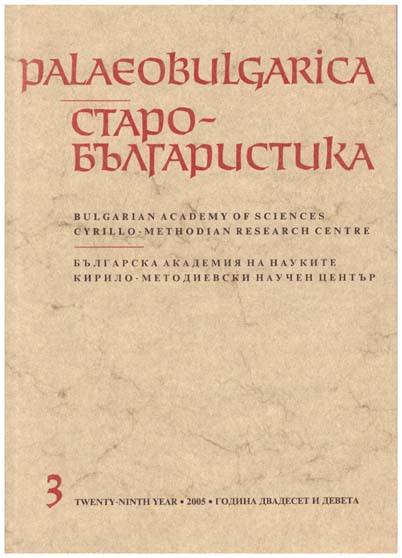Някои добавки и уточнения за езическия период в Българския апокрифен летопис
The Pagan Period in the Bulgarian Apocryphal Chronicle. Hypotheses and Interpretations
Author(s): Rašo RaševSubject(s): History, Language and Literature Studies
Published by: Кирило-Методиевски научен център при Българска академия на науките
Summary/Abstract: Until recently it had been considered that the Bulgarian apocryphal chronicle from the 11th c., published in the 19th c., was lost. It was, however, recently rediscovered in the collection of A. Khludov in the State Historical museum in Moscow. This fact allows us to comment upon some important particularities of the pagan period of the First Bulgarian state. Some of them were misread or interpreted incorrectly. The author examines and corrects six readings. Most interesting are two of them, based on partial homonymy: 1. Leading the Bulgarians towards the river Danube, prophet Isai showed the way not with “a finger”, but with “a trust” (reed), an accessory of rulers and prophets from antiquity. 2. Tsar Ispor (Asparukh) was carried for two years not “in crabé” (a hand-basket) but “in cravé" (a cow). The “birth” of humans from a cow is a famous ritual in the magic practices of some ancient and present-day peoples. The aim of the ritual was to guarantee people from the ruling elite long life and success in what they were doing. Four more themes are added: the relationship between Bulgarians and Cumans, the ethnic origin of the Ismail people, the identification of king Izote, and the interpretation of the name of tsar Slav.
Journal: PALAEOBULGARICA / СТАРОБЪЛГАРИСТИКА
- Issue Year: 2005
- Issue No: 3
- Page Range: 61-71
- Page Count: 11
- Language: Bulgarian
- Content File-PDF

